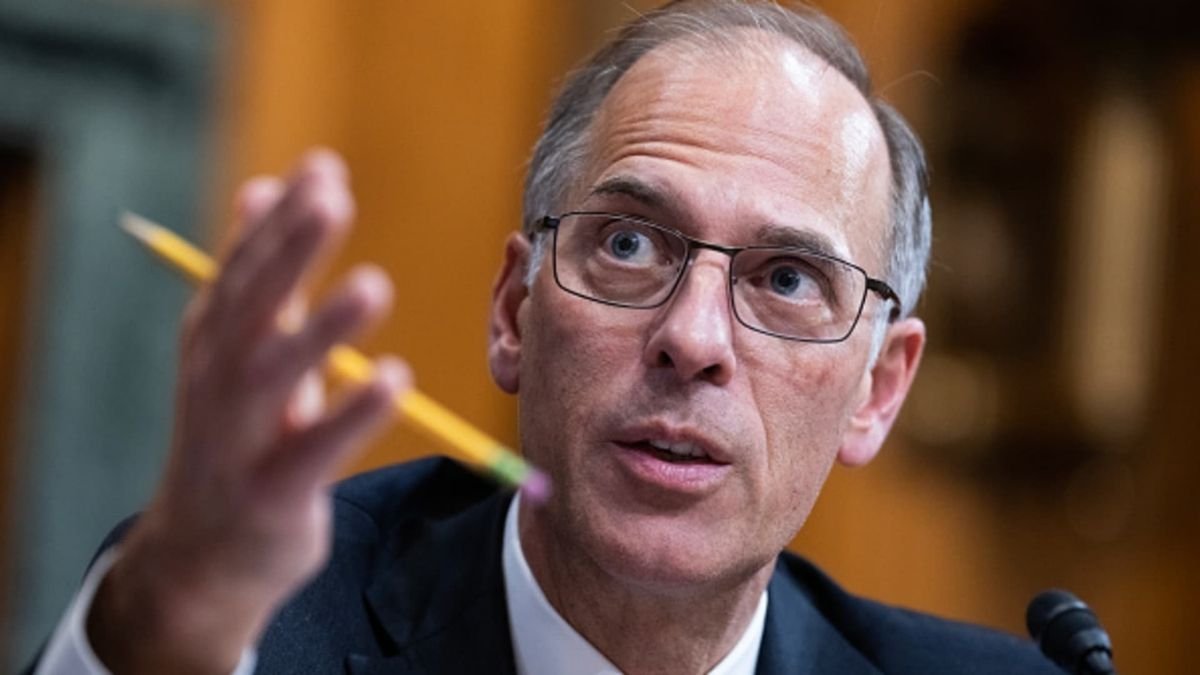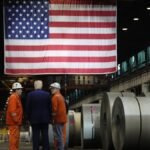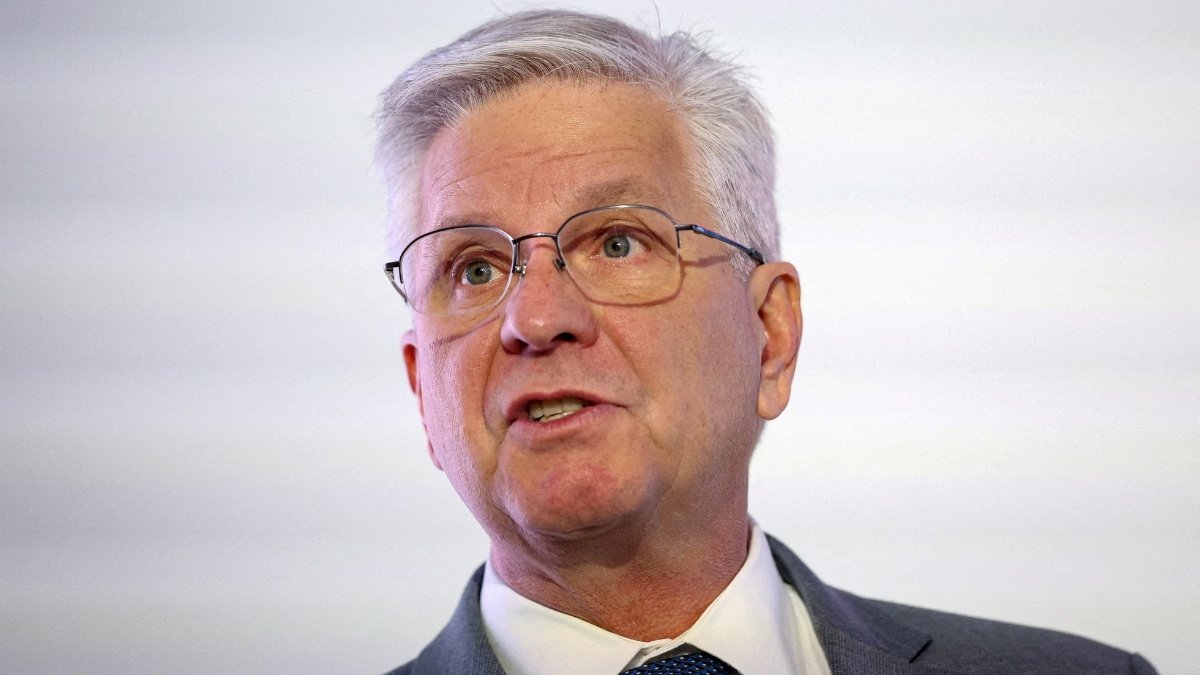President Donald Trump often highlights strong GDP growth, high foreign investment, and low inflation as proof the economy is booming under his leadership. The administration credits tariffs for the economic success and says only cautious policymakers prevent further growth.
However, Mark Zandi, chief economist at Moody’s Analytics, warns that multiple warning signs point to a potential recession by the end of 2025. In an interview with Newsweek, he said the U.S. economy feels “on the brink, on the precipice of this recession.”
Zandi gained recognition for predicting the 2008 financial crisis. He has recently raised concerns about the consequences of trade policies and federal job cuts. He believes these factors could combine to weaken the U.S. economy significantly.
One of Zandi’s top concerns is employment. Job growth has slowed to a “virtual standstill,” he said, and businesses are reluctant to expand payrolls. Low layoffs have so far prevented a full downturn, but that may not last.
“As soon as you see negative employment, that’s when alarm bells should start going off,” Zandi said. He predicts that negative payroll numbers could emerge soon, signaling a growing risk of recession.
Other economic indicators also worry Zandi. GDP growth for the first half of the year was just over 1 percent annualized. Consumer spending has stagnated, manufacturing is contracting, and construction activity shows weakness despite a boom in data centers.
Tariffs have not immediately raised consumer prices as Zandi initially predicted. Companies have delayed price hikes due to policy uncertainty and political concerns. Nevertheless, he expects inflation, now 2.7 percent, to climb above three percent and approach four percent by next year.
“Prices are already rising, but soon they’ll be impossible to ignore,” Zandi said. He added that higher prices and layoffs could trigger a self-reinforcing cycle of reduced consumer spending and further job cuts.
States representing about one-third of U.S. GDP are either near recession or already in contraction, according to Zandi. California and New York are key indicators because they collectively account for over a fifth of the national economy.
“If California and New York weaken, the national economy is going to go into recession,” Zandi said. Conversely, if they hold steady, the broader U.S. economy could avoid contraction. He emphasized these states are bellwethers for national trends.
Zandi said the economy retains structural strengths despite current weaknesses. The rise of artificial intelligence and technology provides positive economic consequences. He believes these long-term forces could offset the negative effects of tariffs and restrictive immigration policies.
The Moody’s machine-learning model places the probability of a recession at 49 percent, nearly even odds. However, Zandi cautioned that the risks are increasing rapidly, and the U.S. economy is vulnerable to further shocks.
In monitoring economic signals, Zandi focuses on three primary areas. First, inflation is critical, as tariffs pass through to consumer prices. Second, consumer spending will show how households respond to higher costs. Third, layoffs will indicate whether businesses adjust to changing demand.
“Historically, recessions begin and end with payroll employment,” Zandi said. Consistent negative employment numbers over several months would indicate the start of a recession according to National Bureau of Economic Research standards.
Zandi challenged the common “two quarters of GDP contraction” rule for defining a recession. He argued that a persistent decline in economic activity, even without consecutive GDP drops, can signal a true recession. Jobs and payrolls, he said, are a more reliable indicator.
The Trump administration attributes strong economic performance to tariffs, job growth, and investment. Zandi countered that first-half GDP growth at just over 1 percent is below historical potential growth of around 2 percent. He said the economy is struggling rather than booming.
Policy choices, including tariffs and restrictive immigration measures, are central to Zandi’s concerns. He believes these policies have caused uncertainty that limits hiring and investment. This uncertainty could soon translate into higher prices, lower spending, and job reductions.
Housing is another troubling sector. Rising mortgage rates have depressed sales, and homebuilding is expected to slow sharply. Inventories of unsold homes are at levels not seen since before the 2008 financial crisis, highlighting risks to economic stability.
Zandi emphasized that the next few months will be critical. Employment data from September and potential revisions could reveal whether the economy begins to lose jobs consistently. These figures may determine whether a recession officially begins.
Other economists have highlighted systemic risks, such as national debt and a contracting money supply. Zandi acknowledged these challenges but emphasized that the U.S. economy also has strong structural foundations. Technology and AI provide positive growth that could stabilize the economy over time.
He also expressed concern over staffing cuts and funding reductions at key government agencies. The Bureau of Labor Statistics, responsible for critical data such as the consumer price index, may face delays or data quality issues. Accurate reporting is crucial for monitoring recession risks.
Zandi stressed that while policy choices are currently a primary factor weakening the economy, long-term structural problems should not be ignored. Fiscal deficits and debt will need attention eventually, but immediate risks stem from tariffs, immigration restrictions, and their effects on jobs and prices.
“Policy errors are often an element of all recessions,” Zandi said. Historically, both the Federal Reserve and administration policies have influenced downturns. However, he noted that current policies stand out because they are intentional and directly affect economic activity.
[inline_related_posts title=”RECOMMENDED” title_align=”left” style=”list” number=”2″ align=”none” ids=”” by=”primary_cat” orderby=”rand” order=”DESC” hide_thumb=”no” thumb_right=”no” views=”no” date=”yes” grid_columns=”2″ post_type=”” tax=””]
Looking ahead, California and New York will serve as early indicators. Technology and professional services currently provide support, but continued strength is essential. If these states falter, the risk of a nationwide recession increases significantly.
In conclusion, Zandi highlighted that the economy is fundamentally sound but vulnerable. Rising prices, stagnant spending, and potential layoffs could combine to trigger a recession. Policymakers and consumers will be watching closely in the coming months.














